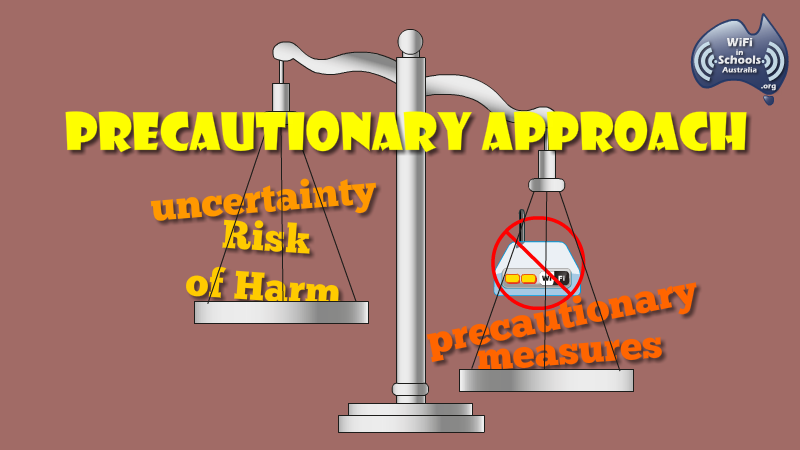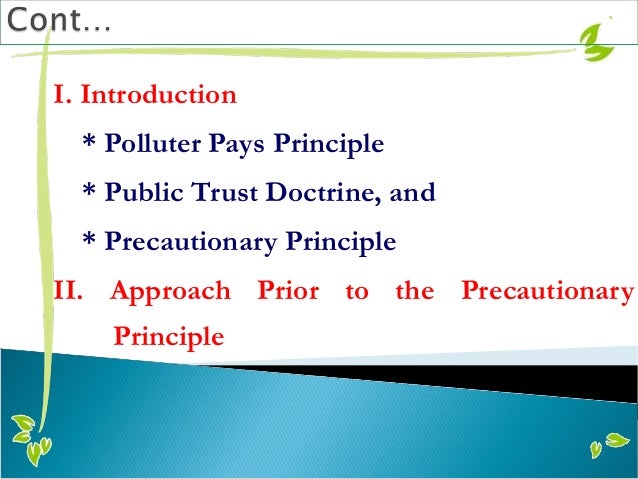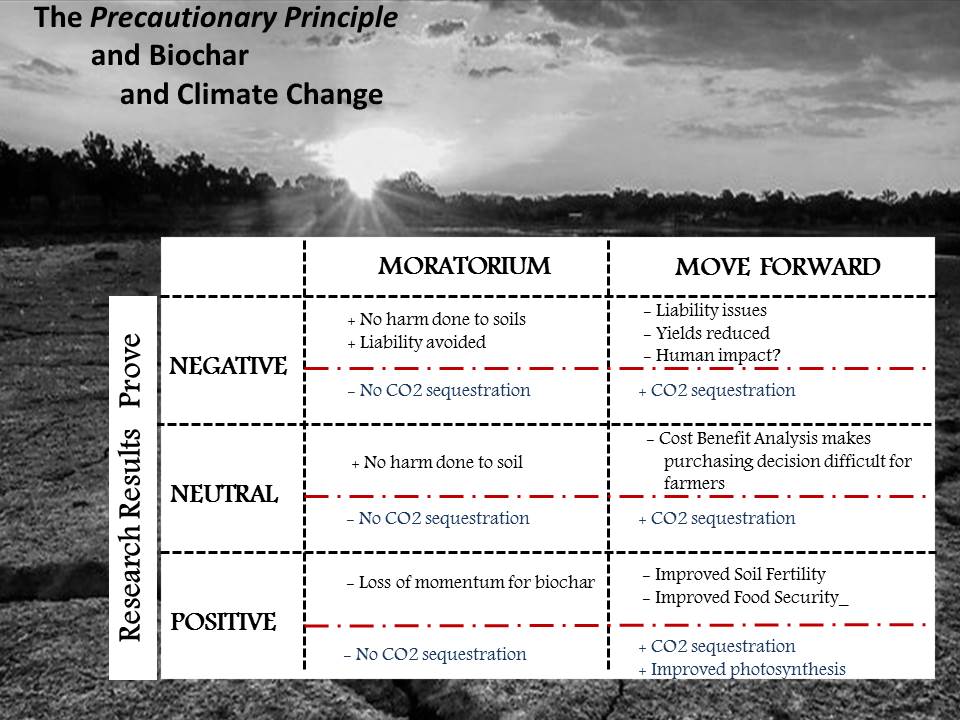

Principle #15 of the Rio Declaration notes (UNEP 1992): One of the primary foundations of the precautionary principle, and globally accepted definitions, results from the work of the Rio Conference, or "Earth Summit" in 1992. It is important to note that, although this principle operates in the context of scientific uncertainty, it generally is considered by its proponents to be applicable only when, on the basis of the best scientific advice available, there is good reason to believe that harmful effects might occur.ĭiverse formulations of the precautionary principle There is an obligation, if the level of harm may be high, for action to prevent or minimize such harm, with the control measures increasing with both the level of possible harm and the degree of uncertainty. The precautionary principle is activated even when the absence of scientific certainty makes it difficult to predict the likelihood of harm occurring, or the level of harm should it occur. Absence of scientific certainty not an obstacle.This is an implicit reversal of the typical onus of proof, whereby harm needs to be demonstrated. Under the precautionary principle, it is the responsibility of an activity proponent to establish that the proposed activity will not (or is very unlikely to) result in significant harm. This is an expression of a need by decision-makers to anticipate harm before it occurs and an obligation, if the level of harm may be high, for action to prevent or minimize such harm. Anticipate harm and take action to minimize potential harm.

Many definitions of the precautionary principle exist, with precaution itself defined as “caution in advance,” “caution practiced in the context of uncertainty," or “informed prudence.” All definitions of the precautionary principle have three major components: 6.5 Change of laws controlling societal norms.4.8 Promotes over-regulation of human activities.4.4 Ignores possible risk of not doing the activity.4.2 Excessive discretion of decision-makers.2.2 Environment and health applications.2 Application of the precautionary principle.1.2 Diverse formulations of the precautionary principle.Its development as part of international law reflects a growing international recognition of the human responsibility to care for the environment and others and to find legal avenues to prevent actions that might cause severe or irreversible consequences to either. The precautionary principle recognizes a social responsibility to protect the public from exposure to harm, when scientific investigation has found a plausible risk. In the case of the pesticide DDT, if the precautionary principle were to be applied universally and narrowly, it would mean that DDT could not even be introduced into regions heavily infected by malaria because of the deleterious potential impacts of DDT on the fauna. Under such a scenario, the cellular phone might not have been permitted until it could be proved not to be a carcinogen. However, a rigid application of this principle also has drawbacks, such as ignoring possible risks associated with not doing the proposed activity or policy, perhaps resulting in banning a technology that brings advantages out of concern for potential negative impacts. In some legal systems, as in the law of the European Union, the application of the precautionary principle has been made a statutory requirement.

It is analogous to such commonplace aphorisms as “an ounce of prevention is worth a pound of cure," “better safe than sorry," “look before you leap," and the ancient medical principle associated with Hippocrates of "First, do no harm." As a result, policy makers are able to make discretionary decisions to delay such an action until scientific findings emerge that provide sound evidence that no harm will result. This principle is important in that it allows one to anticipate harm and take appropriate precautions even in the absence of scientific consensus that the action or policy is harmful and what might be the level of harm. It is a major principle of international environmental law and is extended to other areas and jurisdictions as well. The precautionary principle is the concept that establishes it is better to avoid or mitigate an action or policy that has the plausible potential, based on scientific analysis, to result in major or irreversible negative consequences to the environment or public even if the consequences of that activity are not conclusively known, with the burden of proof that it is not harmful falling on those proposing the action.

The Precautionary Principle illustrated as a decision matrix


 0 kommentar(er)
0 kommentar(er)
